Ward Research Day 2022
Each summer, the Ward Family Summer Student Research Program attracts students from universities from all over Canada to collaborate alongside some of the brightest minds in childhood disability research in the world.
These budding young scientists are embedded in Bloorview Research Institute's research labs such as the Autism Research Centre, the CP Discovery Lab and the PRISM Lab to help researchers unlock a world of possibilities for children and youth with disabilities.
This year, 20 of the best and brightest undergraduate students were selected for this prestigious program from over 1,800 applications coast to coast.
The final highlight of the program is the opportunity for these talented students to showcase their research at the annual Ward Research Day held on July 19th and compete for the best research poster and best oral presentation.
The 2022 winners are:
Best Research Poster award recipients:
- Katrina Meng, University of Toronto
- Grace Reszetnik, McGill University
Best Oral Presentation award recipient:
- Emily Eng, McMaster University
Missed the event? You can watch all the individual student research presentations or the entire event here. Each student's presentation is also embedded in their profiles along with their research abstracts and posters.
The Ward Family Summer Student Research Program is generously supported by the Ward Family Foundation. The Lived Experience and Indigenous Streams within the program are generously supported by CIBC.

Event Agenda: 9:00 to 11:35 a.m.
| Time | Topic |
| 9 a.m. | Welcome Remarks and Land Acknowledgment |
| 9:10 a.m. | Quick Hit Research Presentations (Rounds 1 & 2), Q & A with judges and Kahoot Quizzes |
| 10 a.m. | Short Break |
| 10:07 a.m. | Quick Hit Research Presentations (Rounds 3 & 4) Q & A with judges and Kahoot Quizzes |
| 11 a.m. | Virtual Poster Sessions and Live Chats with Ward summer students |
| 11:25 a.m. | Awards Ceremony and Closing Remarks |
Research Profiles and Posters

University and Program: Toronto Metropolitan University, Biomedical Sciences
Supervisor and Lab: Dr. Azadeh Kushki, Autism Research Centre
Project Title: Association between emotional dysregulation and temperament profiles in children with ASD
Research Abstract:
Principal Investigator: Dr. Azadeh Kushki
Background/Rationale: Temperament is a biologically based characteristic referring to the consistent patterns of feelings and resulting behaviours in an individual. Emotional regulation is the ability to monitor and modify one’s emotions in response to stimuli. This study seeks to examine the association between temperament profiles and emotional regulation capabilities in children with autism spectrum disorder (ASD) using two parent-report questionnaires.
Research Question: Is there an association between temperament profiles and emotional regulation capabilities of children with ASD?
Methods & Analyses (completed or proposed) Sample: 51 children with ADOS-confirmed ASD between the ages of 7-14 (mean age = 11.06±2.34; 42 males), with Full Scale IQ ≥ 85 (mean FSIQ = 108.41±12.34). Protocol: Parents completed two measures: Temperament in Middle Childhood Questionnaire (TMCQ), Emotion Dysregulation Inventory (EDI). Analysis: Linear regression was used to examine the association between the 3 higher-order factors of the TMCQ and the two EDI subscales, including age, gender, and Full Scale IQ as covariates.
Results/Conclusions: There is a significant positive association between the Negative Affect factor of the TMCQ and both the Reactivity (R2 = 0.28; p = 0.00003) and Dysphoria (R2 = 0.23; p = 0.0002) dimensions of the EDI. Gender, age, ethnicity, and Full Scale IQ do not significantly affect this relationship.
Next Steps/Relevance to Holland Bloorview Clients & Families: These results help us better understand contributors to emotional dysregulation. These results suggest that in children with ASD, there is an association between Negative Affect, a factor of biologically based temperament, and the functional manifestations of emotional dysregulation.
Watch Margaret Juryn's research presentation here.
Bio:
Margaret Juryn is working with Dr. Azadeh Kushki within the Autism Research Centre, investigating the ability of physiological indicators to predict heightened emotional states in children with autism spectrum disorder (ASD), and assess how the relationship between autonomic nervous system function and emotional regulation varies between children with and without ASD and anxiety disorders.
Before studying biomedical sciences, Margaret completed undergraduate and graduate level education in accounting at University of Ottawa and University of Toronto and obtained her Chartered Professional Accountant designation. Her previous research experience includes assisting in ophthalmologic studies at other institutions in Toronto, as well as collecting data relating to olive ridley sea turtles in Costa Rica.
On a typical weekend, you could find Margaret rollerblading on the Toronto Islands, at a cultural event in the city, or cooling off in a museum or art gallery.
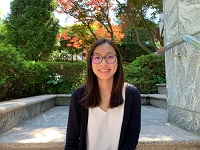
University and Program: University of Toronto - Double Majors in Health & Disease and Economics, Minor in Physiology
Supervisor and Lab: Dr. Tim Ross, EPIC Lab
Project title: Experiences of Paediatric Healthcare Built Environments among Children with Disabilities and their Families: A Scoping Review
Research Abstract:
Principal Investigator: Dr. Timothy Ross
Yu, C.,1 Wong, E.,1 Gignac, J.,1 Walker, M.,1 Ross, T.1,2,3
- EPIC Lab, Bloorview Research Institute, Holland Bloorview Kids Rehabilitation Hospital
- Department of Geography and Planning, University of Toronto
- Rehabilitation Sciences Institute, University of Toronto
Background: Some children with disabilities (CWD) frequently visit paediatric healthcare settings for medical and therapy appointments. Their age, disability, and frequent visits mean they have unique experiences in healthcare settings. Prior research has described their clinical experiences, but little is known about how they experience paediatric healthcare built environments. These environments can influence attitudes toward hospitals and treatments; in turn playing a key role in informing childhood experiences. Given the significant time that some CWD spend in healthcare environments and the potential impact these environments have on their experiences, it is troubling that their views concerning the built environment have received little attention.
Research question: What does the literature tell us about the experiences of CWD and their families with paediatric healthcare built environments?
Methods: Five databases serving health science and geography disciplines were searched using terms concerning children, disability, healthcare, and built environment. The search identified 5397 records for screening, yielding 19 included articles.
Results: Preliminary results suggest that sensory-friendly facilities with outdoor access and child-friendly décor optimize the experiences of CWD and their families. For inpatients, CWD value social spaces and the privacy of single rooms. The built environment experiences of children with chronic illnesses figure prominently in the literature, whereas experiences of children with developmental disabilities are underrepresented.
Next Steps: Research should consider ways to improve access to outdoor spaces and create opportunities for social activities. Built environment experiences of children with developmental disabilities should be considered.
Relevance to Holland Bloorview: Results can inform designs of Holland Bloorview spaces, ensuring they are optimally experienced by children and families.
Watch Clarissa Yu's research presentation here.
Bio:
Clarissa is entering her fourth year of undergraduate studies at the University of Toronto, where she is pursuing an Honours Bachelor of Science in Health & Disease, Physiology, and Economics. This summer, through the Ward Summer Program, she joined the EPIC Lab under the supervision of Dr. Tim Ross. She is currently conducting a scoping review to investigate how youth with disabilities experience paediatric healthcare in built environments. In the future, she aspires to have a career in the healthcare industry and to pursue further research in the fields of pediatric disability and other medical science topics through graduate studies.
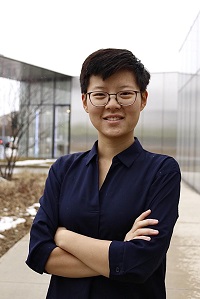
One of two 2022 winners of Ward Research Day's Best Research Poster award
University and Program: University of Toronto, Mechanical Engineering
Supervisor and Lab: Dr. Jan Andrysek, PROPEL Lab
Project Title: 3D Printing Transradial Prosthetic Diagnostic Sockets.
Research Abstract:
Principal Investigator: Jan Andrysek
Background:
Digital Technology (DT), including digital scanning, CAD software, and 3D printing (3DP), is emerging as an enabler of resource efficient fabrication of custom prosthetic devices for lower-limb applications. However, there is minimal research conducted on DT for upper-limb prosthetics, especially for transradial (below-elbow) sockets. Additionally, a clear, rigid, and thermoformable intermediate diagnostic socket must be created for clinical assessment, which has not been explored in 3DP. Thus, this research aims to develop the workflows for model rectification and 3DP of transradial prosthetic diagnostic sockets.
Research Question:
Can DT be used to fabricate transradial prosthetic diagnostic sockets?
Methods:
Client’s residual limb is scanned and used to design sockets through collaboration with clinicians. This design process can be recorded and re-applied to residual limb scans for other clients, resulting in a semi-automated process. Semi-automated and conventionally designed sockets are compared using shape comparison software to determine effectiveness. Sockets are 3DP using various materials, wall thicknesses and post-processing techniques for qualitative evaluation by prosthetists.
Results:
Preliminary analyses reveal areas where automation can be beneficial, such as surface smoothing, and creating standard cut-outs/trimlines. 13 diagnostic sockets were 3DP to determine ideal printing parameters.
Conclusion:
This project provides new insights about the feasibility of digital workflows for the fabrication of paediatric upper limb prostheses.
Relevance:
Findings from this investigation may transform clinical practice across different prosthetic types and lay a foundation for an evidence-based process to create prosthetic devices using additive manufacturing.
Watch Katrina Meng's research presentation video here.
Bio:
Katrina Meng is a fourth-year Mechanical Engineering student at the University of Toronto, pursuing a triple minor in Biomedical Engineering, Mechatronics and Robotics, and Business. As a Ward Summer Research Student, she is working in the PROPEL Lab, under the supervision of Dr. Jan Andrysek.
Katrina has previous experience in industry working for a biomedical devices company. She is also passionate about entrepreneurship and participated in the University of Toronto Entrepreneurship Hatchery program with her company FetchTech.
Moving forward with her studies, Katrina is particularly interested in prosthetics and orthotics device design, and how she can leverage her mechanical design skills in a healthcare setting. Outside of school, she loves immersing herself in new hobbies, such as dragon boat, 3D printing, and travelling, which aid in broadening her perspective of the world.

University and Program: University of Toronto - Engineering Science
Supervisor and Lab: Dr Tom Chau, PRISM Lab
Project title:
Designing a software library to enhance the development of brain-computer interface data processing pipelines.
Principal Investigator: Dr Tom Chau
Research Abstract:
Background: Brain-Computer Interfaces (BCI) are communication technologies that allow users with disabilities and complex communication needs to communicate using only neural activity. BCIs use computational algorithms to analyze brain signals and recognize specific user thoughts. While a number of algorithms are ubiquitous throughout BCI research, there are few platforms for rapid prototyping and implementation of robust processing pipelines. Consequently, the significant technical competencies and resource investment are barriers that can impede researchers. While design tools aimed at reducing these barriers exist, they can be hard to use, missing important features, or difficult to customize. Thus, this project's goal is to build an easy-to-use BCI-software development tool that requires minimal programming expertise.
Research Question: How can a software design tool reduce technical barriers to brain-computer interface design and development?
Methods & Analyses: The tool is a drag-and-drop style visual interface that allows users to create and execute custom processing pipelines. The visual interface and backend, which conducts the processing, were developed in Python using various data science libraries for mathematical computation and the Qt framework for visual element development.
Results: The developed program, BCIPY, allows designers to allocate more time to experimenting with novel pipelines instead of concentrating on the code behind a particular BCI.
Conclusions: BCIPY enables the development of BCIs with minimal programming expertise. Consequently, the tool aims to foster research into applications of BCI and expand their clinical usability. In the future, BCIPY may be expanded to include other elements like built-in simulations for further experimental capability.
Relevance to Holland Bloorview: This software is especially relevant in the context of pediatric care research. Through BCIPY, designers can more easily develop alternative communication pathways for pediatric clients with communication challenges. Furthermore, the tool provides an opportunity for individuals without extensive programming experience (ie. clinicians, scientists) to more actively engage in BCI development and research.
Watch Aaron Lio's research presentation video here.
Bio:
Aaron is a second-year student pursuing a BASc in Engineering Science at the University of Toronto. He is deeply interested in exploring the application of innovative technologies to enhance social welfare, specifically in the context of healthcare accessibility and patient outcomes. As a Ward Summer Student, Aaron has worked alongside PhD candidate Nicolas Ivanov in the PRISM Lab, led by Dr Tom Chau, to develop BCIPY, a novel software library to assist with user-centric brain-computer interface design and user training. His project has allowed him to develop a better understanding of the clinical applications of BCI, machine learning in healthcare, biological signal processing, and object oriented programming. Aaron has previously contributed to research involving Focused Ultrasound, a multi-functional non-invasive surgical technology with the ability to target deep tissue without incisions or radiation. Aaron has deeply appreciated the immersive and invaluable learning opportunities presented to him through his work in the PRISM Lab.
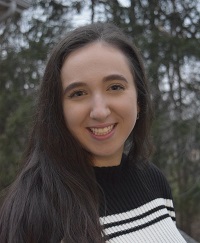
University and Program: McMaster University - Psychology, Neuroscience & Behaviour; Mental Health Specialization
Supervisor and Lab: Dr. Darcy Fehlings, CP Discovery Lab
Project Title: Parent-mediated interventions for promoting participation in children with physical disabilities: Synthesizing the impact on psychological well-being
Name of PI: Darcy Fehlings
Research Abstract:
Background: Children with physical disabilities have restricted participation, which may have a secondary negative impact on psychological well-being. There is a knowledge gap regarding how effective parent-mediated interventions are in promoting child participation, and what the secondary impact is on child well-being. This project aims to synthesize the evidence on the effects of participation-promoting interventions on well-being. This knowledge will enable better understanding of well-being intervention outcomes.
Research Question: For children ages 2-19 with physical disabilities, are parent-mediated interventions for promoting participation effective in improving child psychological well-being?
Methods & Analyses: This secondary analysis is part of a larger systematic review assessing effectiveness of parent-mediated participation-promoting interventions. The following databases will be searched: Ovid MEDLINE, EMBASE, CINAHL, and PsycINFO. Inclusion criteria includes randomized or non-randomized designs, or case studies with 5 or more participants; children ages 2-19 with a physical disability; an explicit aim to promote participation; and interventions delivered to parents. Outcomes extracted for analysis will include measures related to psychological well-being (i.e., quality of life (QOL), goal achievement, program satisfaction/enjoyment). A qualitative narrative synthesis and, if appropriate, meta-analyses will be conducted.
Results: The database search is ongoing. We expect to synthesize and evaluate the certainty of the evidence on the impact of participation-promoting interventions on child psychological well-being.
Conclusions: This review will inform which child psychological well-being outcomes to include in a subsequent early-intervention pilot feasibility study promoting participation.
Relevance: This synthesis will improve the current understanding of participation-promoting interventions and their impact on the well-being of children with physical disabilities.
Watch Taryn Simon's research presentation here.
Bio:
Taryn Simon is the 2022 Ward Summer Research Student working in the CP Discovery Lab under the supervision of Dr. Darcy Fehlings. In September, Taryn will be entering the fourth year of her undergraduate degree at McMaster University, where she is majoring in Psychology, Neuroscience & Behaviour with a specialization in Mental Health.
This summer, Taryn is working on the SPORT study, which aims to improve the hand function of children with hemiplegic cerebral palsy by combining constraint induced movement therapy with transcranial direct current stimulation. She is also working on a systematic review looking at the effectiveness of parent-mediated interventions for promoting participation in children with physical disabilities.
Taryn’s academic and professional interests lie at the intersection of developmental disability and clinical psychology. Her future goal is to pursue a career investigating and treating psychological disorders in children with developmental and physical disabilities.
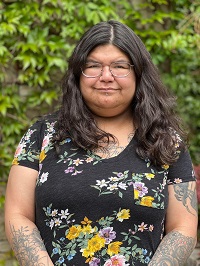
University and Program: Algoma University , Psychology
Supervisor and Lab: Dr. Tom Chau, PRISM Lab
Project Title: An Indigenous Framework on BCI Technology
Research Abstract:
Principal Investigator: Dr. Tom Chau
Solomon, M. & Chau, T.
Assistive technology is equipment utilized by individuals with disabilities to help increase independence with regards to daily living, learning, or working. These include aids to enhance mobility, hearing, vision, learning, or communication.
A brain-computer-interface (BCI) is an example of assistive technology. Imagine being able to control the environment without having to move a muscle. BCI technology makes this a reality. BCIs determine functional intent directly through the analysis of brain activity.
There has been extensive research with regards to BCI technology. Yet there is something missing: the Indigenous voice.
The purpose of this study is to build an Indigenous framework with regards to BCI technology. The following research questions will be addressed: (1) What traditional teachings might relate to AT/BCI?, (2) What is the Indigenous perspective with regards to disability and AT/BCI?, and (3) What are the common disabilities within Indigenous communities in Ontario?
The proposed methodology is to interview Indigenous community members with lived experience with a disability.
We will be doing this by conducting three separate sharing circles in accordance with traditional protocol. The groups will comprise: (1) youth, (2) adults, and (3) knowledge keepers.
To analyze the discussions, we will be completing an inductive thematic content analysis. In other words, we will listen for an overall theme across all sharing circles.
The Indigenous perspective may help provide a better understanding of social interpersonal synchrony. The development of assistive technology like BCIs must include an Indigenous perspective in order to meet the needs of Indigenous families.
Watch Mallory Solomon's research presentation here.
Bio:
Mallory Solomon is an Oji-Cree woman from Constance Lake First Nation. She has recently graduated from Algoma University with a Bachelor of Arts Honours degree in Psychology from Algoma University. She will be entering year one of the Master of Arts in Clinical Psychology program at Lakehead University. Her previous research at Algoma University focused on the impact of Indigenous representation with regards to research and counselling practice. Her current research at Holland Bloorview focuses on the Indigenous perspective to assistive technology and brain computer interfaces.
Mallory hopes by continuing her education, she hopes to bring back the much-needed services to the communities in Northern Ontario.
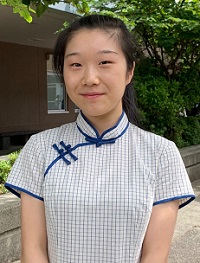
University and Program: University of Toronto, Engineering Science
Supervisor and Lab: Dr. Azadeh Kushki, Autism Research Centre
Project Title: Examining the effect of age on neuroimaging measures in children with and without neurodevelopmental conditions
Research Abstract:
Name of PI: Azadeh Kushki
Background/Rational: There has been a growing number of neuroimaging studies of neurodevelopmental conditions (NDC). Many investigations attempt to correct for age-related effects, yet these effects may differ between independently acquired datasets, challenging the replicability and generalizability of findings. Thus, there is a growing need to understand how developmental effects in NDCs may differ across neuroimaging datasets.
Research Question: Are developmental effects in NDCs different in two datasets: the Province of Ontario Neurodevelopmental Network and the Healthy Brain Network ?
Methods & Analyses: We used functional magnetic resonance imaging (fMRI) data from both datasets (POND: N=551; HBN: N=551). Functional connectivity strength of 232 brain regions were derived from fMRI data. Normative modeling, performed using Gaussian process regression as implemented in the Predictive Clinical Neuroscience Toolkit, was used to construct dataset-specific age-related trajectories. The degree to which each participant deviated from the models was quantified and compared between datasets.
Results/What We Are Learning: Both datasets exhibited significant deviations from models that were constructed from the other dataset. Effect sizes were largest when the HBN dataset was used as the normative sample, and effects were more pervasive in males compared to females.
Conclusions/Next Steps: Our findings suggest that age-related effects are different across independent datasets. For the next steps, preprocessing and normative modelling analyses will be repeated on diffusion MRI data.
Relevance to Holland Bloorview Clients & Families: The results of the project will help understand the replicability of age-related effects in NDCs in different datasets.
Watch Julia Ye's research presentation here.
Bio:
Julia is entering her second year of Engineering Science Program at the University of Toronto. As a Ward summer student in the Autism Research Centre with Dr. Kushki, she focuses on the quality control of MRI data and examining the effect of age on neuroimaging measures in children with neurodevelopmental disorders. She is thankful for this amazing program to pursue her research interest for the first time. As her academic career progresses, she wishes to continue exploring machine learning, and its applications in the medical field. Julia is passionate about using machine intelligence to improve the diagnosis and treatment of mental health disorders. In her free time, she enjoys exploring trails in GTA, working out or spending time working on design team projects.
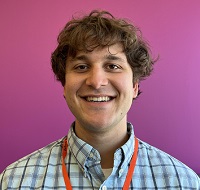
University and Program: Queen's University - Mathematics and Engineering -- Computing and Communications Option
Supervisor and Lab: Dr. Deryk Beal, CONNECT Lab
Project Title: A MATLAB Program for Data Analysis in Formant Perturbation Experiments
Name of PI: Dr. Deryk Beal
Background/Rationale
Formant perturbation is a well-established experiment that is used to assess speech adaptation. The output from these experiments is audio data, which is difficult and tedious to analyze, therefore a need exists for a customizable data analysis program. Furthermore, these programs should be adjustable and customizable for various experimental paradigms and analysis methods.
Research Question
Can we create a reliable and accurate program that compiles and analyzes formant data with customizable experimental and analysis paradigms?
Methods and Analyses
A MATLAB Program was developed using data from the formant perturbation software package Audapter. Results from the program were compared with results from typical analysis methods (By hand/ R). The program’s outputs were then compared with expected outputs.
Results/What We Are Learning
The program is a feasible method of analysing formant perturbation data in multiple research paradigms. Future researchers and/or clinicians may use the software to save time and resources.
Conclusions/Next Steps and Relevance to Holland Bloorview Clients and Families
For speech language pathologists, determining a patient’s ability to respond to a formant perturbation could become a diagnostic test nearly as simple as checking someone’s heartbeat. Clinical use of the software at Holland Bloorview can inform diagnoses for children with non-typical speech-language functions.
For further efficiency, it would be beneficial to create an embedded system that could both run and analyze the results of a formant perturbation experiment.
Watch Deven Shidfar's research presentation video here.
Bio:
Deven is attending Queen’s University, studying Applied Math and Computer Engineering. His goal is to use mathematics and engineering solutions to further modern medicine and the field of pediatric research. The project he contributed to as a ward summer student involved using non-invasive brain stimulation (rTMS) to understand the role of a specific part of the brain in speech production and adaptation. He is hoping to pursue a masters in Neural engineering.
Deven loves to drink black tea with sugar cubes and sit under weeping willow trees.
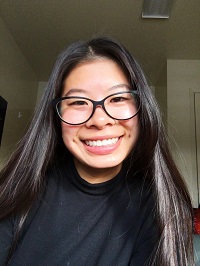
University and Program: York University - Honours Biomedical Sciences
Supervisor and Lab: Dr. Sally Lindsay, TRAIL Lab
Project title: Discovering autistic youth and young adults’ experiences of workplace disclosure
Research Abstract:
Shaelynn Hsu, Vanessa Tomas, Sally Lindsay
Background/rationale: Deciding to disclose one’s autism in the workplace is a complex process which incorporates a multitude of factors. Most research focuses on autistic adults, and little is known about the disclosure experiences of autistic youth and young adults as they are newly transitioning to employment.
Research Question: What are the experiences of autistic youth and young adults when deciding whether and how to disclose their autism at work?
Methods and analysis: We conducted six virtual focus groups with 23 Canadian autistic youth and young adults (13 men, 8 women, 1 transman, 1 transwoman, age range 18-29). To analyze the data, we used an inductive thematic analysis led by two coders on NVivo.
Results: We developed six overarching themes: 1) weighing benefits and risks, 2) external factors, 3) experiences of autism, 4) disclosure roadmap, 5) contingent supports, and 6) the game plan. Several factors at the individual level influenced disclosure decision-making and navigation, with external factors such as workplace environment, culture, and social determinants being the greatest influencer.
Conclusions/Next Steps: The study revealed individualized, context-dependent disclosure experiences and influencers which can inform future research to prioritize, understand, and explore the impact of external factors during the disclosure process.
Relevance to Holland Bloorview Clients & Families:
These findings offer Holland Bloorview clinicians (eg. occupational therapists and job coaches) knowledge to develop employment tools and programs to support autistic clients with the workplace disclosure process.
Watch Shaelynn Hsu's research presentation here.
Bio:
Shaelynn is currently an undergraduate Candidate in the Honours Biomedical Sciences program at York University. She hopes to combine her passion for working with youth and adults with disabilities and interest in research to develop inclusive strategies and facilitate independence as a Ward Research Summer Student at the Bloorview Research Institute. She is also currently working as a Life Skills Assistant in Holland Bloorview's VolunteerABLE, Youth@Work, and Ready to Work employment programs which help youth with disabilities in their transition to adult life.
In the future, Shaelynn hopes to continue a career in research focusing on youth with disabilities’ experience in transitioning to adult life in education, work and finding employment in a client-centered approach. Currently, she is working alongside PhD Candidate Vanessa Tomas and under Dr. Sally Lindsay’s supervision to understand autistic youth’s experiences in disclosing needs in the workplace.
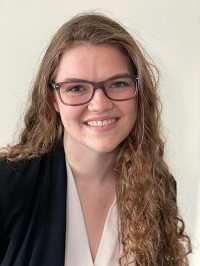
University and Program: Queen’s University - Mechanical Engineering -- Biomechanical Option
Supervisor and Lab: Dr. Tom Chau, PRISM Lab
Project Title: Performance Optimization of a Brain-Computer Interface Communication System for Children with Disabilities
PI: Dr. Tom Chau
Research Abstract:
Background: Brain-computer interfaces (BCIs) are systems that decode brain activity and translate them into external commands. A specific application of BCIs called the P300 speller allows users to communicate by presenting users with a grid of characters that flash in a random sequence. The user can choose their desired character by visually focusing on it when it is flashed. This triggers a distinct brain activity, known as the P300 response, which allows the BCI system to differentiate between target and non-target stimuli.
Research Question: Can a P300-based BCI speller be an effective form of communication for children with disabilities?
Methods & Analyses: A flash sequence algorithm was developed to optimize the performance of the P300 speller by eliminating any occurrences of the same button flashing twice or adjacent buttons flashing together. These events can reduce the size of the P300 response and cause distractions that result in the wrong button being chosen. The speed and amount of adjacent/double flashes were compared to random selection of flash groups, which was the original method that was being used.
Results: This algorithm proved successful in eliminating all double flashes and adjacent flashes. The algorithm also reduced the total time/flashes for each button to be uniquely identifiable by 0.898 seconds and 3 flashes for a 40 button grid.
Conclusion/Next Steps: The next steps for this study are to recruit children (age 8-19 years) with disabilities to test the communication system, as well as research and develop tactile and auditory P300 systems for individuals with visual impairments.
Relevance to Holland Bloorview Clients & Families: This communication system could provide an alternative form of communication for clients who have not yet found a reliable access method.
Watch Maeghen Carroll's research presentation here.
Bio:
Maeghen has completed three years of school at Queen’s University studying Mechanical Engineering with a biomechanical specialty. As part of her program, she has also completed a yearlong internship at H.H. Angus, an engineering consulting firm. After graduation, Maeghen hopes to work in a capacity where she can contribute to innovation for medical devices and technology. Throughout her summer at Holland Bloorview, Maeghen has been working in the PRISM lab, assisting on a project titled “Non-Invasive Brain Computer Interface Technology for Augmentative and Alternative Communication”. For this project she has been working to try and optimize the performance of a BCI speller program. Overall, Maeghen is incredibly grateful to be a part of this program, which has provided her with invaluable skills and experience, as well as an amazing introduction into research.
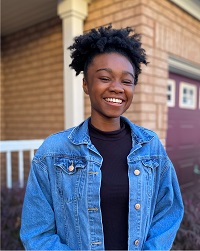
University and Program: University of Toronto - Psychology and Health Studies (BSc
Supervisor and Lab: Dr. Gillian King
ProjectTitle: Fostering Friendships Through Meaningful Engagement with the Arts
Background: Children with disabilities experience higher rates of social exclusion and bullying than their peers without disabilities. With fewer opportunities for making and maintaining close friendships, children with disabilities are at higher risk of loneliness, depression, and other negative health outcomes. Arts-based programming as an accessible way to communicate and express oneself has demonstrated remarkable potential to facilitate the foundations for friendships. However, research surrounding the arts as a means for social inclusion is lacking, and often takes a clinical perspective rather than recognizing individual needs and goals.
Research Question: In children ages 2-18 living with disabilities, how does arts-based programming foster the foundations for friendships by meeting needs for the self, needs from others, and needs from the environment?
Methods: A scoping review was completed using keywords such as “Disability”, “Friendship” and “Arts-Based Programming.” Initial screening resulted in 13,378 studies. 159 articles made it to full text screening. Needs for the self, from others, and from the environment within these studies will be extracted to recognize common themes.
Results: Although this review is ongoing, it is expected that the diversity in which children can engage with the arts will allow for needs across all three domains to be met.
Next Steps: Results are intended to inform service providers and policy makers of the importance of funding arts-based programs in healthcare.
Relevance to HB: Arts provide opportunities to make friends while holistically and positively influencing health.
Watch Brianna Wedderburn's research presentation video here.
Bio:
Brianna is an undergraduate student at the University of Toronto pursuing her Bachelor of Science in Psychology and Health Studies. This summer, she has had the pleasure of working with Dr. Gillian King and Eric Smart on a scoping review. They spent their time together researching aspects of the arts which foster social inclusion and friendship amongst children with disabilities. She hopes their research illustrates the diverse ways in which the arts promote self expression, meaningful participation, and accessible social opportunities. Brianna is passionate about creating inclusive environments while enabling kids to engage in the activities they love without barriers. Her studies and experiences have led her to recognize the holistic nature of development, as well as its implications for occupational engagement. In the future, Brianna hopes to work with kids with disabilities and contribute to research that will move us closer to a truly accessible world.

2022 winner of Ward Research Day's Best Oral Presentation award
University and Program: McMaster University, Cognitive Science of Language
Supervisor and Lab: Dr. Deryk Beal, CONNECT Lab
Project Title: Exploring the neural correlates of speech adaptation using repetitive transcranial magnetic stimulation (rTMS)
PI : Dr. Deryk Beal
Research Abstract:
Background: Speech adaptation is critical to speech acquisition and maintenance across development, but its neural mechanisms are poorly understood. Limited evidence from neuroimaging and neuromodulation studies has implicated the left ventral premotor cortex (LvPMC) as a critical node in the neural network supporting speech adaptation. Our aim is to document the effects of regulating the neural activity of the LvPMC on performance during a well-established speech adaptation task; namely auditory perturbation.
Research Question: What is the effect of facilitatory, inhibitory, and sham rTMS of the LvPMC on performance in an auditory perturbation task?
Methods and analyses: We will investigate speech adaptation by altering the auditory feedback of speech properties and measuring compensatory responses under three conditions: 1. Facilitatory rTMS, 2. Inhibitory rTMS, and 3. Sham rTMS targeted to the LvPMC. Participants will be randomly assigned to receive one rTMS condition before completing our speech adaptation task. Auditory feedback during speech production of single words will be altered. Mixed ANOVAs will be conducted to investigate responses across conditions.
Results: If the LvPMC is a critical node in the speech adaptation neural network, then participants’ compensatory responses will be 1. Enhanced in the facilitatory condition, 2. Suppressed in the inhibitory condition, and 3. Standard in the sham condition.
Next Steps: Participants will complete the experimental protocol.
Relevance: Our study will enhance our understanding of the neural basis of speech adaptation and childhood speech acquisition.
Watch Emily Eng's research presentation here.
Bio:
Emily Eng is a fourth year undergraduate student studying Cognitive Science of Language at McMaster University. She is currently pursuing a career in Pediatric Speech Language Pathology, and will be applying to Clinical Master's programs this year. During her time as a Ward Summer Student, Emily has explored the use of non-invasive brain stimulation to investigate the neural correlates of speech. She is grateful to Holland Bloorview and the Connect Lab team for this incredible experience.
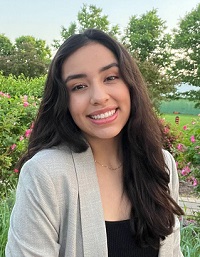
University and Program: Western University - Honours Specialization in Neuroscience
Supervisor and Lab: Dr. Tom Chau, PRISM Lab
Project Title: Brain State-Dependent Brain Stimulation: a Review of the Current Implementations and Preliminary Interpretations from the Electroencephalography of Youth
Research Abstract:
Through the PRISM Lab, supervised by Dr. Tom Chau, this project is titled Brain State-Dependent Brain Stimulation: a Review of the Current Implementations and Preliminary Interpretations from the Electroencephalography of Youth.
Brain state-dependent brain stimulation (BSDBS) has previously been implemented for motor rehabilitation in adults only, and its success has depended on the patient’s ability to perform motor imagery.
However, BSDBS has not yet been implemented for motor rehabilitation in children. Given that children’s ability to perform motor imagery is unreliable, the goal of this project is to develop BSDBS for children via implicit motor imagery that is enforced through motor observation.
To this end, we evaluate whether observation of a movement produces brain activity comparable to the execution of the same movement and if so, whether it is robust enough to operate a BSDBS protocol instead of motor imagery.
We used an electroencephalogram (EEG) system to record brain activity in youth aged 9-19 with upper limb weakness or paralysis while they watched or executed a hand squeezing motion. Time-frequency analysis was conducted through EEGLAB in order to identify comparable brain activation between execution and observation of the same movement.
The next step in this project is to develop an observation-based brain-computer interface that triggers brain stimulation upon the detection of a movement-related brain state that is enforced by movement observation.
The outcomes of this study can impact clients at Holland Bloorview through the development of a new avenue for rehabilitation in children who have upper limb weakness or paralysis.
Watch Sofia Varon's research presentation video here.
Bio:
Sofia will be entering her fourth and final year of an Honours Specialization in Neuroscience at Western University in the fall. This summer, she has been working in the PRISM Lab in investigating brain state-dependent brain stimulation systems and the role of the brain in movement execution and movement observation in youth. Through her research and studies, she has become interested in the intersection of neuroscience and technology, such as brain-computer interfaces, and in understanding the mechanisms of the brain. She is also passionate about improving accessibility to science and research, and promoting science communication. She hopes to continue to explore these interests as she progresses through her career in the setting of neuroscience and rehabilitation research.

University and Program: University of Toronto -- Bachelor of Arts and Sciences -- Music Specialist
Supervisors and Lab: Elaine Biddiss and Alexander Hodge, PEARL Lab
Project Title: Educational, Engaging and Entertaining: Development of a “Virtual Music Teacher” app for Early Childhood Music Education
Name of PI: Dr. Elaine Biddiss
Research Abstract:
Background/Rationale: There exists opportunity gaps in early childhood music education for children with disabilities. The aim of the Virtual Music Teacher (VMT) project is to design and implement an accessible early childhood music education curriculum that will reduce opportunity gaps while addressing stakeholder needs.
Research Question: What are the existing learning goals and accessibility considerations in Canada's early childhood music education curriculums?
Methods and Analyses: A systematic review of provincial curriculums (grades K-3) for early childhood music education. Data extracted included learning goals, suggested activities and prompts, and any accessibility considerations. Thematic analysis and a mind mapping tool were used to group related learning goals.
Results/What Are We Learning: Learning goals fit into three broad categories: musical building blocks, music performance and creation, and the human experience of music. Across provinces, there exists a similar emphasis on creative expression through music. There are differences apparent in the emphasis placed by provinces on representing cultural aspects of music making. The provincial curriculums fail to suggest adaptations or accommodations for students with sensory, physical, and cognitive disabilities.
Conclusion. This study identifies the need to for greater integration of accessibility into Canada’s early childhood music curriculum to ensure that children of all abilities can be engaged in musical learning. This review will guide content generation for the VMT app that aligns with Canadian music curriculum while also prioritizing equity, diversity and inclusion.
Relevance to Holland Bloorview Clients and Families: The VMT app will break down the barriers that many HB clients and families may face in the pursuit of adequate music education for their children.
Watch Hannah Maclean's research presentation here.
Bio:
Hannah just finished her first year at University of Toronto and is currently pursuing a Bachelor of Arts and Sciences, with a specialist in music. She is currently pursuing a career in music therapy. In her research, she is interested in how music education can positively affect the lives of children with disabilities. She wishes to learn more about how to create maximum quality of music education for children, especially in the case of those who have a disability, and how to make music education more accessible for all children.
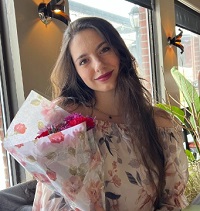
University and Program: University of Toronto , Biology for Health Sciences & Psychology
Supervisors and Lab: Dr. Azadeh Kushki, Autism Research Centre
Project Title: Determinants of Underrepresented Recruitment in ASD Research
Name of PI: Dr. Azadeh Kushki
Research Abstract:
Background/Rationale: Autism research has excluded equity-deserving groups, especially Indigenous communities, racialized individuals, women, and individuals with disabilities, and continues to grossly lack diversity. Very little is known about the factors that contribute to this underrepresentation. To address this gap, this rapid review was carried out to establish the determinants of under-representation in autism research.
Research Question: What factors contribute to the participation of Indigenous and other racialized groups in autism research?
Methods & Analyses: We undertook a rapid review of the literature following guidelines by the Cochrane Collaboration’s recommendations. Using three databases, Medline, Embase, and APA Psycinfo, we used a comprehensive search strategy and our inclusion/exclusion criteria to identify studies reporting determinants of participation for equity deserving groups. The articles underwent a risk of bias assessment and a narrative synthesis of the data took place.
Results: The initial search identified 1,226 articles. After removing duplicates in Covidence, 519 articles remained. During title and abstract screening, another 391 articles were excluded, resulting in 128 articles to be sent to the full text review. 66 articles will be reviewed by two independent reviewers and the results will be reported.
Conclusions: Analyses are currently on-going.
Relevant to Holland Bloorview Clients: This research can help inform strategies to increase participation of families from equity-deserving groups in research.
Watch Paige France's research presentation here.
Bio:
Paige, entering her third year at the University of Toronto, is completing a double major in Biology for Health Sciences and Psychology. During her Ward Summer Student placement at the Bloorview Research Institute, she completed a literature review that involves examining underrepresented research as it pertains to Autism Spectrum Disorder.
Through analyzing OVID databases, Medline, Embase, and APA Psycinfo, Paige was able to condense her research paradigm to articles relating to the recruitment processes and inclusion criteria in ASD research. Using Covidence, the rapid review found trends in the recruitment which demonstrated underrepresentation as it relates to gender; visible minorities such as Latinx, Hispanic, Black, and Indigenous peoples; high support individuals including deaf and/or non-verbal; single-parent and other non-traditional households; as well as families of lower-socioeconomic statuses. Recognizing that a lack of inclusivity exists within current ASD research recruitment models leading to non-representative samples provides the framework to re-examine our processes and encourage a more inclusive, and therefore beneficial, research direction.
In her free time, Paige enjoys listening/crying to Taylor Swift and ripping around Oakville on her motorbike.
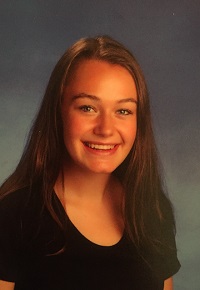
One of two 2022 winners of Ward Research Day's Best Research Poster award
University and Program: McGill University - Bioengineering
Supervisor and Lab: Dr. Tom Chau, PRISM Lab
Project Title: Correlating Features from a Collaborative Tracing Task to Social Responsiveness Scores in Children with Autism
Principal Investigators: Karly Franz and Dr. Tom Chau
Research Abstract:
Background/Rationale: Autism’s diverse manifestations makes it difficult to create methods which can identify Autism in childhood. Currently, studies show that children with Autism display behavioral differences in social interactions, such as in collaborative tasks. Other studies show high rates of motor difficulties in children with Autism, such as in drawing tasks. However, there lacks an investigation of these motor difficulties in tracing tasks, and how the severity of these motor difficulties can be correlated to social interaction differences.
Research Question: In children with Autism aged 7 to 16, can features measured from their tracings completed during a collaborative drawing game show significant correlations to their social responsiveness scores?
Methods & Analysis: 30 children with Autism and 15 Typically Developing children collaboratively traced an image with their parents on a tablet computer. Social responsiveness scores from the SRS-2 questionnaire were collected for all participants. A variety of static and dynamic features were calculated on 720 drawings. A linear regression on these features and the social responsiveness scores was then performed.
Results: Preliminary results on 50 drawings show that 9 different drawing features, including average distance from trace and amount of time drawing, have a significant correlation to the social responsiveness scores of children.
Conclusions/Next Steps: Findings from this study suggest that collaborative drawing analysis could be a promising technique for indicating Autism in childhood. Further analyses with more drawings are needed to determine which drawing features may be most indicative.
Relevance to Holland Bloorview Clients and Families: With more ways to indicate Autism in childhood, more children may have the opportunity to be diagnosed and access essential services.
Watch Grace Reszetnik's research presentation here.
Bio:
Grace is a fourth-year student in Bioengineering at McGill University. She is passionate about applying engineering and mathematics to medicine and biological systems. She is especially fascinated by the brain and is working with Dr. Tom Chau and PhD candidate Karly Franz in the PRISM Lab to investigate neural synchrony in children with Autism.
Grace adores working with children and has developed a special connection with Holland Bloorview, volunteering for 5 years in various inpatient and outpatient units. She also enjoys running, biking, and coaching soccer with the Special Olympics program.
Grace is thankful for the opportunity to explore childhood disability research in the Ward program this summer and is looking forward to using the skills she learns to continue pursuing pediatric research in the future.
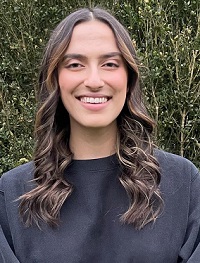
University and Program: University of Guelph - Psychology & Family and Child Studies
Supervisor and Lab: Dr. Gillian King
Project Title: Clinimetric Properties of Validated Child and Youth Self-Report Measures: An Integrative Review
Principal Investigators: Dr. Gillian King & Dr. Kate Einarson
Research Abstract:
Background/Rationale: Client engagement contributes to treatment outcomes. However, no measure currently exists to assess child and youth engagement in pediatric rehabilitation. A review of existing child and youth self-report measures is warranted to inform the development of such a tool.
Research Question: What are the clinimetric properties of validated child and youth self-report measures used in clinical settings?
Methods & Analyses: We conducted a review searching five medical and social science databases targeting our main concepts of ‘child/youth engagement’ and ‘self-report measures’. Five reviewers have screened the titles and abstracts of 12,704 articles using predetermined inclusion/exclusion criteria. A full-text review to identify validated self-report measures is now underway.
What We Are Learning: We are identifying numerous self-report measures intended for clinical use with children and youth aged 8-18.
Next Steps: Measures of interest will be assessed using the Outcome Measures Rating Form Guidelines (Law, 2004), which investigates the focus, clinical utility, construction and standardization processes, reliability, and validity of measures. We will summarize these observations to provide recommendations for a pediatric rehabilitation self-report measure.
Relevance to Clients & Families: These findings will inform the development of a self-reported measure of child-and youth engagement, as a part of the larger Pediatric Rehabilitation Intervention Measure of Engagement (PRIME) project. This tool will help clients, families, and clinicians to monitor and facilitate child and youth engagement in pediatric rehabilitation, potentially improving outcomes.
Watch Yasmin Elliott's research presentation here.
Bio:
Yasmin Elliott (she/her) is a fourth-year Psychology student at the University of Guelph. This summer, she is working under the supervision of Dr. Gillian King and Dr. Kate Einarson on an integrative review investigating self-report measures of child and youth engagement in therapeutic interventions.
The knowledge acquired from this review will be used to inform the development of a child and youth self-report measure of in-session engagement in pediatric rehabilitation interventions to be used in research and practice to facilitate positive treatment outcomes. Through her experience working with children, youth, and families from diverse backgrounds,
Yasmin has grown passionate about enabling healthy physical and emotional development for a wide range of individuals. Through her work, she strives to employ rigorous research practices with a commitment to the effective dissemination of research findings to professionals in the field as well as the general public through various knowledge translation initiatives.
In the future, Yasmin hopes to combine these interests to pursue studies and a career in clinical psychology with a developmental focus.

University and Program: University of Guelph, Bio-Medical Science - Honours
Supervisor and Lab: Dr. Azadeh Kushki, Autism Research Centre
Project Title: The Effects of Sensory Processing and Emotional Regulation in ASD and TD Children
Researchers: Nicholas Barkhouse, Robyn E Cardy, Tithi Paul, Azadeh Kuskhi
Research Abstract:
Background: Autism can be associated with difficulties in emotional regulation (ER). These difficulties can decrease participation in life activities, school, and impact long-term outcomes such as risk of mental health conditions (e.g., anxiety). Autism can also be associated with differences in sensory processing which may impact ER processes; however, the association between sensory differences, emotion regulation, and anxiety in autism remains largely unknown.
Research Question: How do sensory processing differences affect ER and anxiety in children with autism spectrum disorder (ASD), anxiety (ANX), and typically developing (TD) children?
Methods & Analyses: Data collected using the Short Sensory Profile (SSP), Screen for Childhood Anxiety Disorders (SCARED), and Emotion Dysregulation Inventory (EDI) were analyzed in 119 participants (nASD = 53, nTD = 58, nANX = 8; ) aged 7-16 (mean = 10.52+sd = 2.45). Correlation analyses were conducted to examine the association between sensory differences, ER, and anxiety.
Results: Higher levels of sensory differences were associated with higher levels of emotion dysregulation ( dysphoria: r = -0.42, p < 0.05; reactivity: r = -0.48, p < 0.05). Higher levels of sensory differences were also associated with higher anxiety scores (r = -0.47, p < 0.05).
Conclusions/Next Steps: Preliminary results suggest that differences in sensory processing may be associated with increased difficulties with ER and anxiety.
Relevance to Holland Bloorview Clients & Families: These differences in children's sensory processing, ER, and anxiety profiles may inform therapeutic strategies for children with autism.
Watch Nicholas Barkhouse's research presentation here.
Bio:
Nicholas just graduated from the University of Guelph, receiving his Bio-Medical Sciences - Honours degree. Nicholas is currently working as a Ward Summer Student under Dr. Azadeh Kushki in the Autism Research Centre, where he focuses on how short sensory input affects emotional regulation and anxiety in autistic, typically developing, and children with anxiety. He is very greateful to be part of Holland Bloorview this summer.
Nicholas is very passionate in the field of rehabilitation and helping those with disabilities. He feels connected working in the Autism Research Centre, having been diagnosed with Autism during his childhood. As he graduates, he looks forward to working in the healthcare field and rehabilitative care in his future.
During his free time, he volunteers in the community, working out at home and in the gym, and helps assists children at Frontier College.
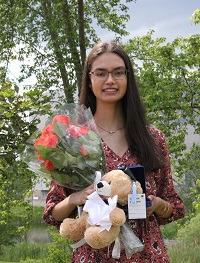
University and Program: McMaster University - Integrated Biomedical Engineering and Health Sciences
Supervisor and Lab: Dr. Tom Chau, PRISM Lab
Project Title: Brain Computer Interface Piano Keyboard: Musical Instrument for Children with Severe Motor Impairments due to Neurological Conditions
Name of PIs: Dr. Tom Chau, Jenny Tou, Jason Leung
Research Abstract:
Background/Rationale: Brain Computer Interfaces (BCIs) are assistive technologies that convert brain signals into commands to enable individuals with various disabilities to interact with their environment. Due to various neurological disabilities, children with severe motor impairments are not able to play normal musical instruments. Although playing music has many neurological benefits, there are few opportunities for children with motor impairments to participate in musical activities.
Research Question: Can a P300-BCI musical instrument graphical interface produce a robust brain signal in users?
Methods & Analyses (completed or proposed): The graphical interface consists of a piano keyboard, with an image flashing on all the keys in a randomized sequence. To play a note, the user looks at the target piano key, while the images are flashing, and this process produces a P300 brain signal detected by the electroencephalogram (EEG). A Riemann geometry classifier is used to determine the piano key that the user is looking at, and after it makes this decision, the interface plays the sound of the piano note.
Results/What are we Learning: In pilot testing, robust P300 event related potentials were recorded and detected while the piano keyboard interface was in use.
Conclusions: The detection of the P300 signal can enable children with motor impairments to play the piano. Next steps: Conduct music therapy sessions for 8 weeks with children with motor impairments and evaluate structural and functional changes in the brain.
Relevance to Holland Bloorview Clients & Families: This motor independent BCI piano keyboard interface will be used as a rehabilitation tool in musical therapy sessions, allowing children with severe motor impairments to experience the joy of playing music, while exercising their brains.
Watch Anusha Broekhuyse's research presentation here.
Bio:
Anusha is entering her fourth year of the Integrated Biomedical Engineering and Health Sciences program at McMaster University. She enjoys using her interdisciplinary knowledge in engineering and science to solve real-world problems in the health-care field. As a Ward Summer Research Student in the PRISM Lab, she is using Unity, a cross-platform game development software, to develop a Brain Computer Interface (BCI) Piano Keyboard. With the use of an EEG, this keyboard enables users with limited hand mobility to play the piano by simply looking at a piano key on the interface.
Anusha is an advocate for youth with disabilities as she wrote and illustrated a children’s book called “Logan Learns to Play”, to raise awareness for diversity and inclusion in soccer. Anusha enjoys being involved in her community as a soccer coach and visual art instructor for youth with disabilities.